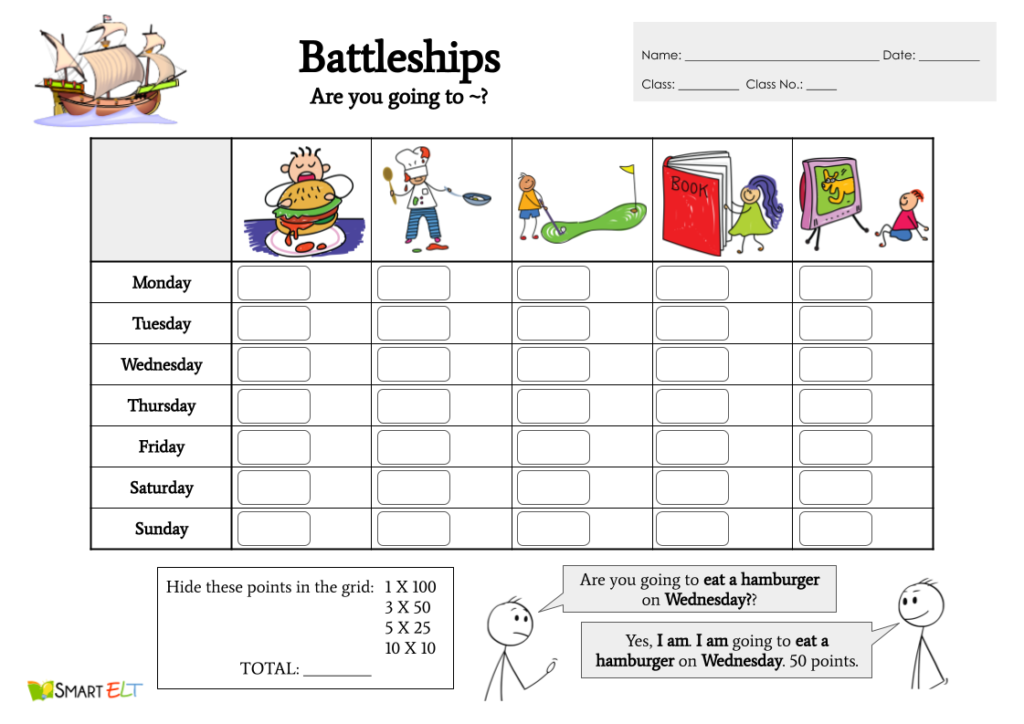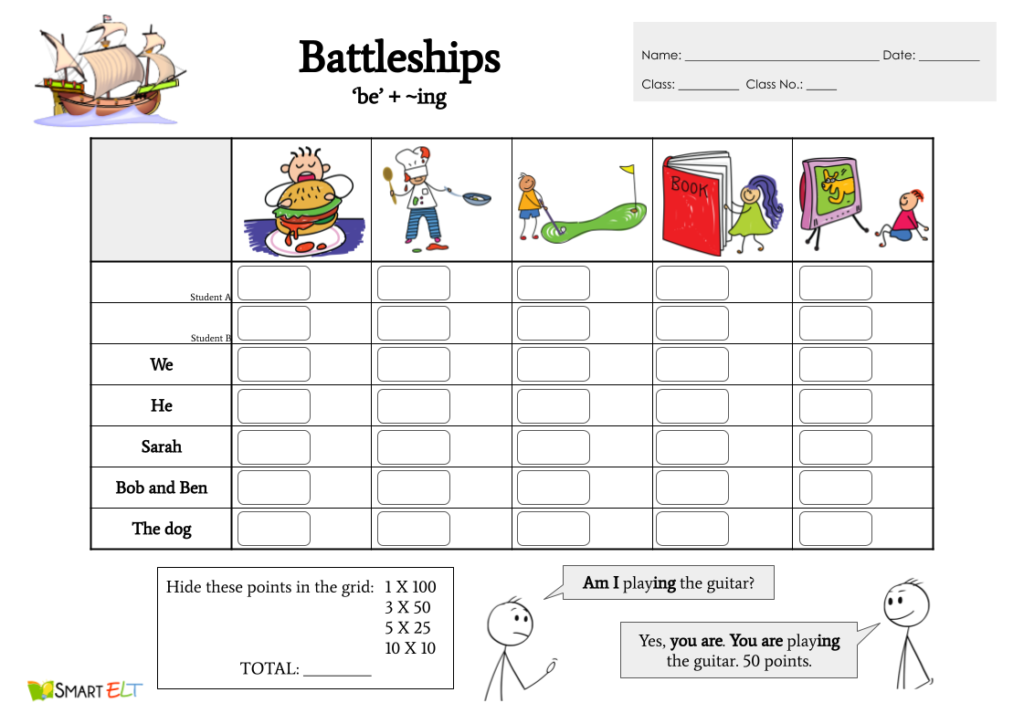
Game Introduction:
The way I play this game is a little different from the standard battleships game.
Set up the table as shown in the example. Instead of having letters and numbers, for example, ‘B-7’, have the first half and the second half of the sentence structure that you are teaching.
For example, you could have ‘days of the week’ versus ‘activities’ (to practice various tenses).
Students then fill in the squares with numbers, for example, in a 7×5 grid, 35 squares, have 1 X 100, 3 X 50, 5 X 25, and 10 X 10. Modify these according to the size of your grid. I usually add circles to the squares, as in the examples here, so that students can mark the points they are hiding separately from marking the squares they have asked questions about.
Next, set up your Q&A dialogue. For example, “Are you going to eat a hamburger on Wednesday?” the student then checks their grid; no number would have the response “No, I’m not. I’m not going to eat a hamburger on Wednesday.” And a numbered square would have the response “Yes, I am. I am going to eat a hamburger on Wednesday. XX Points!”
Time the game and get the students to do as many Q&A exchanges as they can. Then, they add up their respective scores and the winners are asked to raise their hands. You can have the losers applaud the winners for their great efforts!
NOTE:
This game needs a careful step-by-step introduction the first time that you play it. I might start by playing this as a class game where students or groups get to ask me a question about the grid that I have. From this, students can picture the game.
After you get the students to start, get a pair to model the activity first, then let the whole class try once, then let them break loose.
Once this activity has been done once, the next time will be much quicker and should just need the new language to be set up.
Variations:
This game can be used to practice with different subjects. For examoke, you can have ‘I, you, Bob, She, It, They, We’ along one side (See below). However, be careful with the Q&A answer formats; the question will be “Did I play golf?” and the partner will look at the ‘I’ ‘Play golf’ square, and following the above rules directly answer, “Yes, I did.” Where the answer should be “Yes, you did.” The only way to deal with this is to either take it out of the game or make sure that you pre-teach this idea very carefully before the gameplay starts!

Examples of this activity for various lesson targets:
Battleships – Dates
Battleships game to practice ‘be going to’ to describe future plans.
Battleships – Future Tense
Battleships game to practice ‘be going to’ to describe future plans.
Battleships – Likes and Dislikes
Battleships game to practice asking about likes and dislikes.
Battleships – Present Continuous
Battleships game to practice the present continuous tense.









